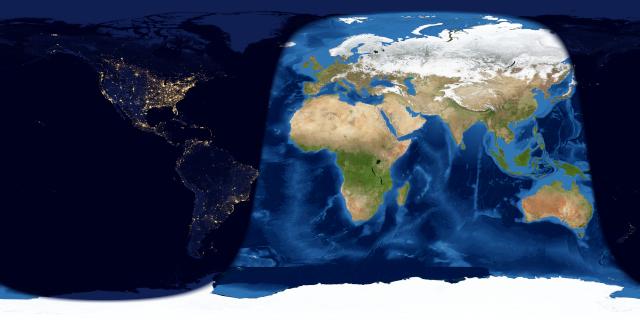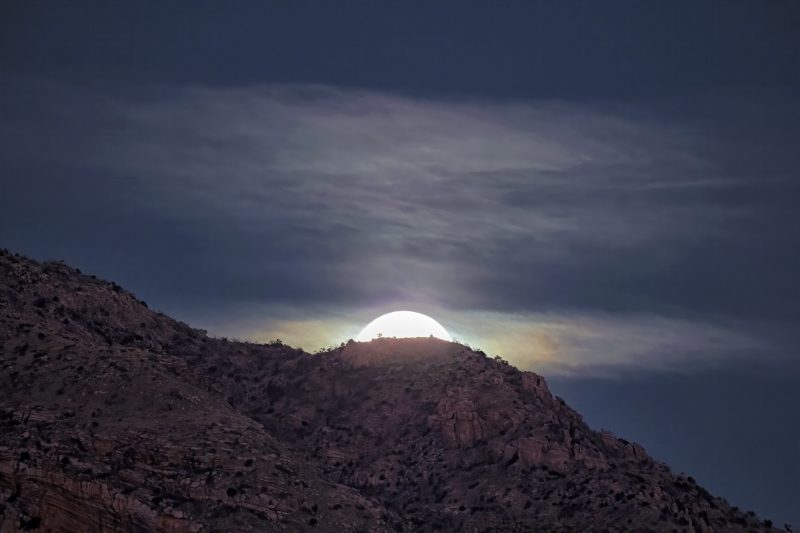Depending on where you live worldwide – that is, on your time zone – the moon turns full on February 26 or 27, 2021. From around the world on both nights, the moon will appear full to the eye as it arcs across the sky from dusk until dawn. In North America, we call the February full moon the Snow Moon or Hunger Moon. As dusk turns into darkness on Friday evening, February 26, you might see a bright star pop out rather close to the moon. That’ll be Regulus – aka Cor Leonis or the Lion’s Heart – in the constellation Leo. By February 27, the moon will have moved on in its orbit, shifting continually eastward in front of the stars. It’ll still be in Leo, though, and bright Regulus will still be nearby.
Want to know which constellation lies behind the moon? Visit Heavens-Above to find out.
To the eye, the moon can look full for a few nights in succession. To astronomers, though, the full moon occurs in a single instant, when the moon is 180 degrees opposite the sun in ecliptic longitude. This full moon instant occurs on February 27, at 08:17 UTC; translate to your time zone. For us in the U.S., that’s February 27 at 3:17 a.m. EST, 2:17 a.m. CST, 1:17 a.m. MST, at 12:17 a.m. PST – yet on February 26, at 11:17 p.m. Alaskan Time and 10:17 p.m. Hawaiian Time.
Here’s another way of looking at it: the moon-sun elongation is 180 degrees at the instant of full moon. You can find out the present moon-sun elongation via The Moon Tonight. A positive number depicts a waxing moon and a negative number a waning moon.

Because the moon is opposite the sun at the vicinity of full moon, any full moon mimics the path of the sun for six months hence. From around the world, the late February full moon – like the late August sun – rises north of due east and sets north of due west. In the Northern Hemisphere, the February full moon (like the August sun) follows the high path of the summer sun and therefore stays out longer than 12 hours; yet, at temperate latitudes in the Southern Hemisphere, the February full moon (like the August sun) follows the low path of the winter sun and stays out for less than 12 hours.
In February, from around the world, the sun rises south of due east and sets south of due west. Therefore, the southern February sun gives the Northern Hemisphere less than 12 hours of sunlight, but provides more than 12 hours of sunlight to the Southern Hemisphere.
Day by day, the sun is rising and setting farther and farther northward along the horizon. Day by day, the Southern Hemisphere is slowly losing daylight while the Northern Hemisphere is gaining it. By the time the March equinox comes on March 20, 2021, the sun will pretty much rise due east and set due west in both the Northern and Southern Hemispheres, giving equal day and night around the world. After that, the sun will rise and set north of due east and west, giving the Northern Hemisphere its turn for longer and warmer days.

Bottom line: At the vicinity of full moon, the moon rises around sunset, climbs highest in the sky around midnight, and sets around sunset. This February 2021 full moon – on the night of February 26-27 – is near the star Regulus in the constellation Leo. For us in the Northern Hemisphere, the path of the Snow Moon across our sky is a welcome reminder of the longer summer days to come.
Read more: Meet Regulus, the Lion’s Heart











